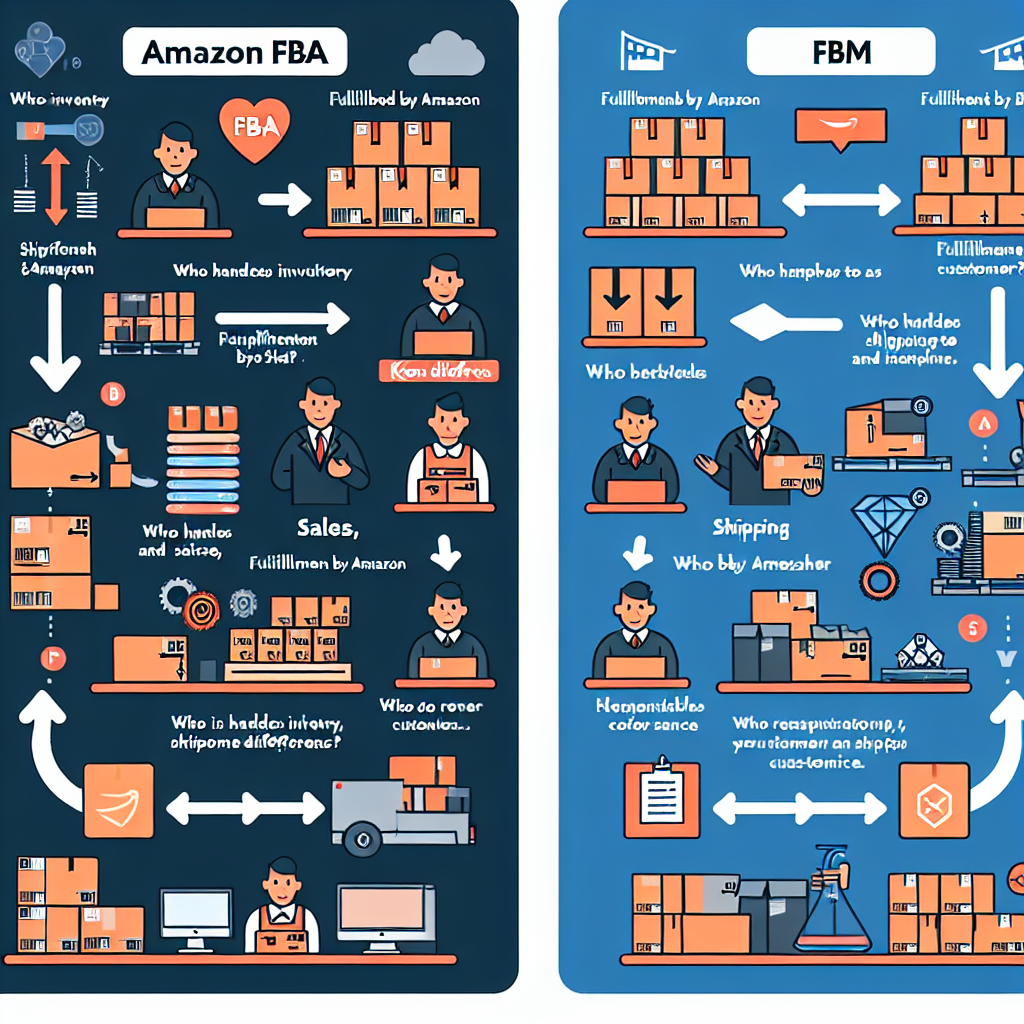Introduction to Amazon FBA vs. FBM ===
When selling products on Amazon, sellers have two main fulfillment methods to choose from: Fulfillment by Amazon (FBA) and Fulfillment by Merchant (FBM). Understanding the differences between these two methods is crucial for sellers to make informed decisions about how they want to manage their inventory, shipping, and customer service. In this article, we will explore the key differences between Amazon FBA and FBM to help you determine which option is best for your business.
Fulfillment Methods: FBA Explained
Fulfillment by Amazon (FBA) is a service provided by Amazon where sellers store their products in Amazon’s fulfillment centers. When a customer places an order, Amazon picks, packs, and ships the product on behalf of the seller. Additionally, Amazon handles customer service, including returns and refunds. This means that sellers do not have to worry about storing, packing, or shipping their products, allowing them to focus on other aspects of their business, such as marketing and product development.
One of the main advantages of using Amazon FBA is the Prime eligibility that comes with it. Products fulfilled by Amazon are eligible for Amazon Prime, which means they are eligible for free two-day shipping for Prime members. This can significantly increase sales for sellers, as many customers prefer to purchase Prime-eligible products. Additionally, Amazon FBA offers a higher level of customer trust, as customers know that their orders will be fulfilled by Amazon, a company known for its fast and reliable shipping.
Fulfillment Methods: FBM Explained
Fulfillment by Merchant (FBM) is a fulfillment method where sellers are responsible for storing, packing, and shipping their products to customers. With FBM, sellers have full control over the entire fulfillment process, including shipping costs and delivery speed. While FBM requires more work on the seller’s end, it can be a cost-effective option for sellers with larger or unique products that may not be suitable for Amazon’s fulfillment centers.
Sellers who choose FBM have the flexibility to customize their shipping methods and packaging to match their brand’s identity. Additionally, FBM allows sellers to have more control over their inventory levels and pricing strategies. However, sellers using FBM are not eligible for Amazon Prime benefits, which may deter some customers who prefer fast and free shipping. Overall, FBM is a good option for sellers who want more control over their fulfillment process and are willing to handle the logistics themselves.
Key Differences Between FBA and FBM
The key differences between Amazon FBA and FBM boil down to the level of control and convenience for sellers. Amazon FBA offers convenience and time-saving benefits, as Amazon takes care of storage, packing, shipping, and customer service. This can be particularly beneficial for sellers who want to scale their business quickly and reach a larger customer base. On the other hand, FBM gives sellers more control over their fulfillment process, allowing them to customize their shipping methods, packaging, and pricing strategies.
Another important difference between FBA and FBM is the cost structure. Amazon FBA charges fees for storage, picking, packing, and shipping, which can eat into a seller’s profit margins. Conversely, FBM allows sellers to save on fulfillment fees but requires them to handle all aspects of fulfillment themselves. Ultimately, the choice between FBA and FBM depends on factors such as the size of the seller’s inventory, the type of products being sold, and the level of control the seller wants over their fulfillment process.
In conclusion, understanding the differences between Amazon FBA and FBM is essential for sellers looking to optimize their fulfillment process on the platform. By weighing the pros and cons of each method, sellers can make an informed decision that aligns with their business goals and resources. Whether you choose FBA for its convenience and scalability or FBM for its control and cost-effectiveness, both fulfillment methods have their unique advantages and considerations. To learn more about Amazon FBA and FBM, consider checking out Amazon’s official resources on Fulfillment by Amazon and Fulfillment by Merchant.
Internal Links:
- Understanding Amazon FBA
- Fulfillment Methods on Amazon
- Selling on Amazon
External Links:
Mastering Amazon Seller Central: The Ultimate GuideUnderstanding Amazon FBA Fees: A Comprehensive BreakdownMastering the Art of Amazon ReviewsRelevant LinkRelevant LinkRelevant Link


